
- CN 62-1070/P
- ISSN 1000-694X
- Bimonthly 1981

Journal of Desert Research ›› 2025, Vol. 45 ›› Issue (1): 215-228.DOI: 10.7522/j.issn.1000-694X.2024.00156
Jialiang Sun( ), Ning Huang, Yuhao Zhao, Binbin Pei, Jie Zhang(
), Ning Huang, Yuhao Zhao, Binbin Pei, Jie Zhang( )
)
Received:2024-10-08
Revised:2024-11-18
Online:2025-01-20
Published:2025-01-13
Contact:
Jie Zhang
CLC Number:
Jialiang Sun, Ning Huang, Yuhao Zhao, Binbin Pei, Jie Zhang. Application and validation of the varied porosity model in simulating sand-grown flexible plant[J]. Journal of Desert Research, 2025, 45(1): 215-228.
Add to citation manager EndNote|Ris|BibTeX
URL: http://www.desert.ac.cn/EN/10.7522/j.issn.1000-694X.2024.00156

Fig.1 Schematic diagram of plant model parameters and boundary conditions of computational domain (A), and numerical simulation scheme for FSI using a cylinder array as the plant (B)
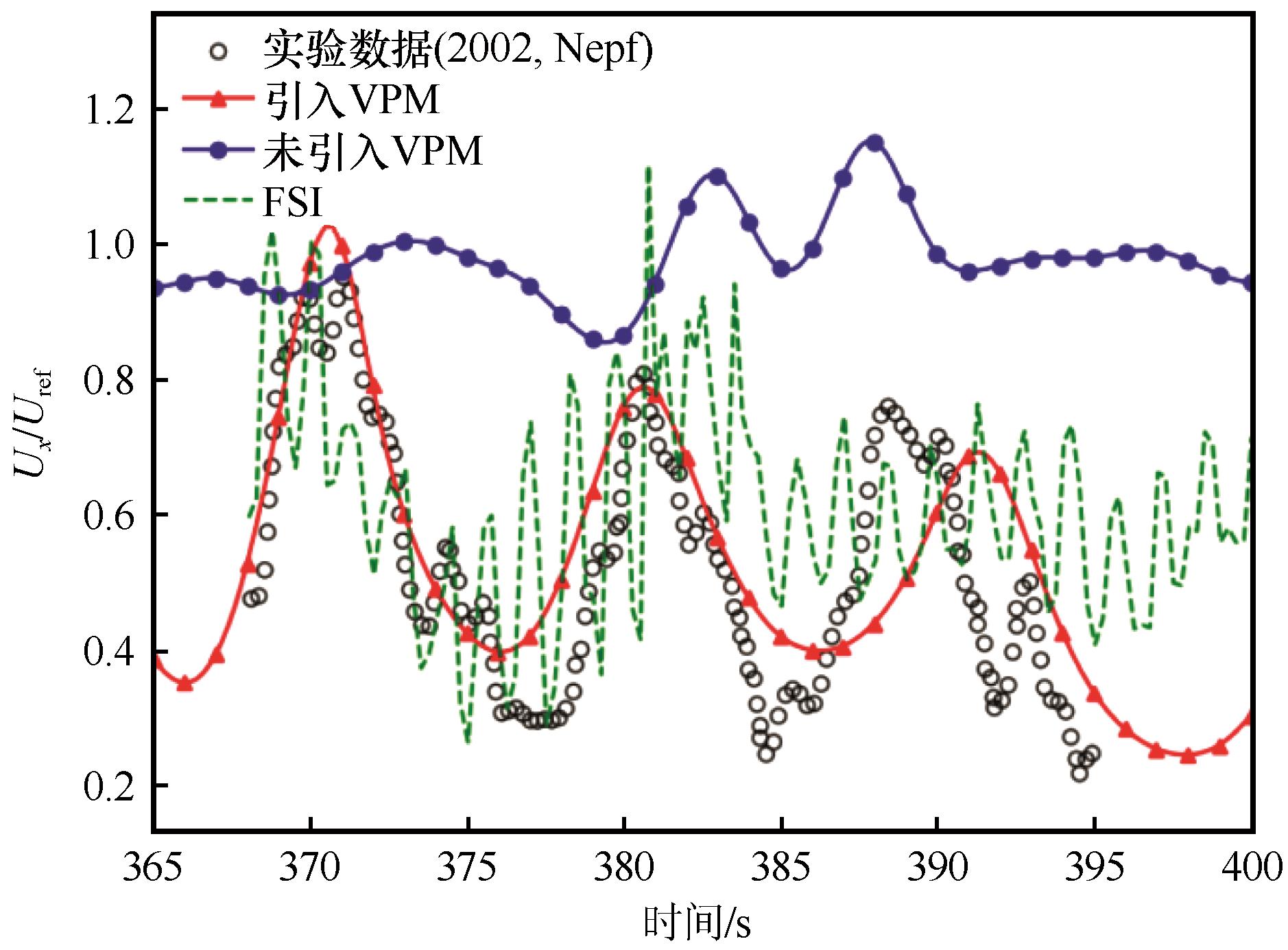
Fig.3 Transient velocity variation curves within the canopy layer over time, with numerical calculation results incorporating flexible plant sway compared to previous experimental data
| 工况 | 振幅A | 频率f | 位移L |
|---|---|---|---|
| 工况1 | 2 | 0.1 | 2 |
| 工况2 | 2 | 0.5 | 2 |
| 工况3 | 2 | 2 | 2 |
| 工况4 | 0.5 | 0.1 | 0.5 |
| 工况5 | 0.25 | 0.1 | 0.75 |
Table 1 Parameters for the simulation of dynamic resistance coefficients under different operating conditions
| 工况 | 振幅A | 频率f | 位移L |
|---|---|---|---|
| 工况1 | 2 | 0.1 | 2 |
| 工况2 | 2 | 0.5 | 2 |
| 工况3 | 2 | 2 | 2 |
| 工况4 | 0.5 | 0.1 | 0.5 |
| 工况5 | 0.25 | 0.1 | 0.75 |
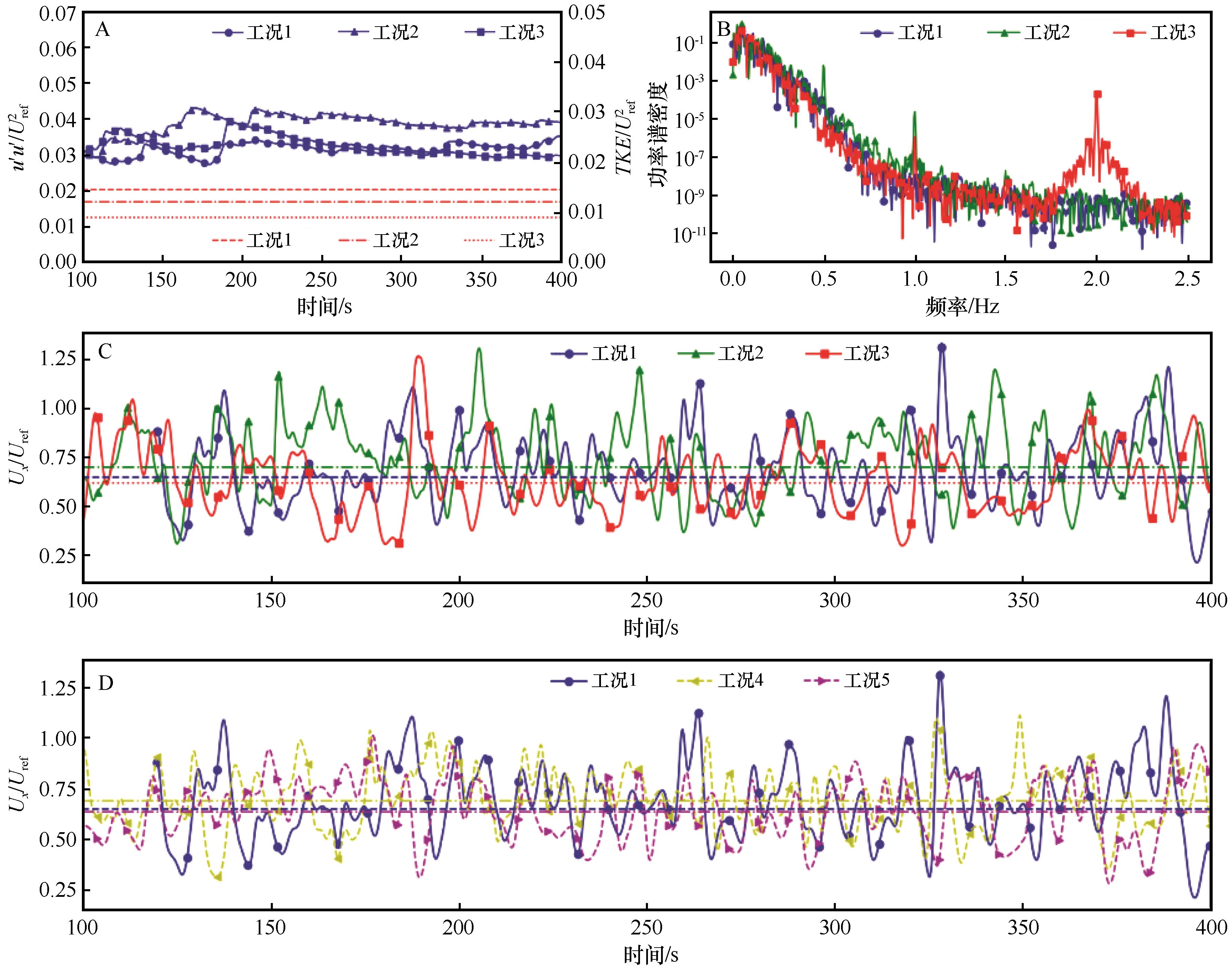
Fig.10 Fluctuating velocity (A, dot solid lines for RMS values and dashed lines for turbulent kinetic energy), spectrogram of velocity energy density (B), transient velocity (C, D, solid lines for instantaneous and dashed lines for time-averaged velocity) in the front contact zone
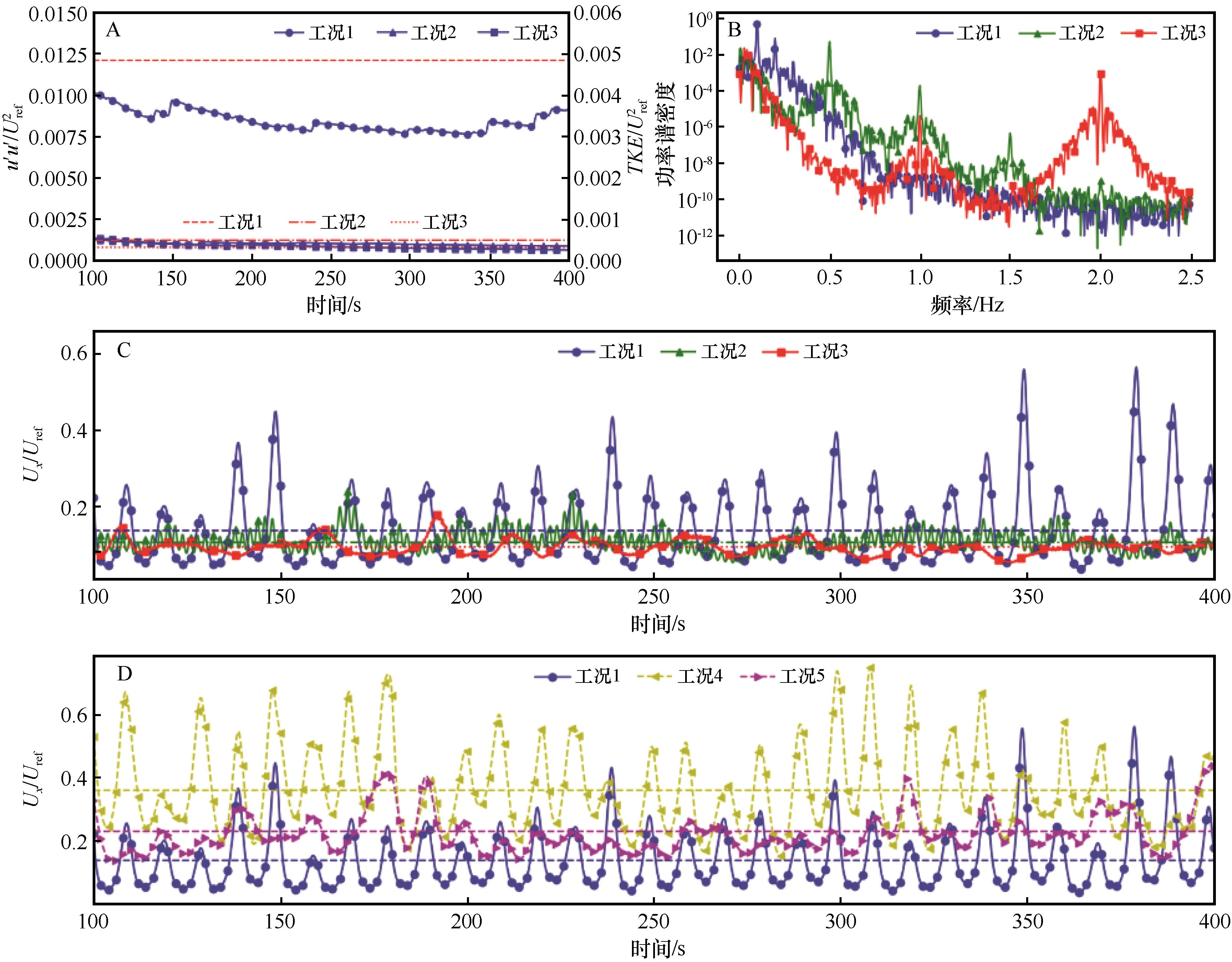
Fig.11 Fluctuating velocity and turbulent kinetic energy (A), velocity energy density spectrum (B) and transient velocity curves (C, D) inside of canopy

Fig.12 Fluctuating velocity, mean turbulent kinetic energy (A), velocity power spectral density (B), and instantaneous flow velocity (C) in near wake region
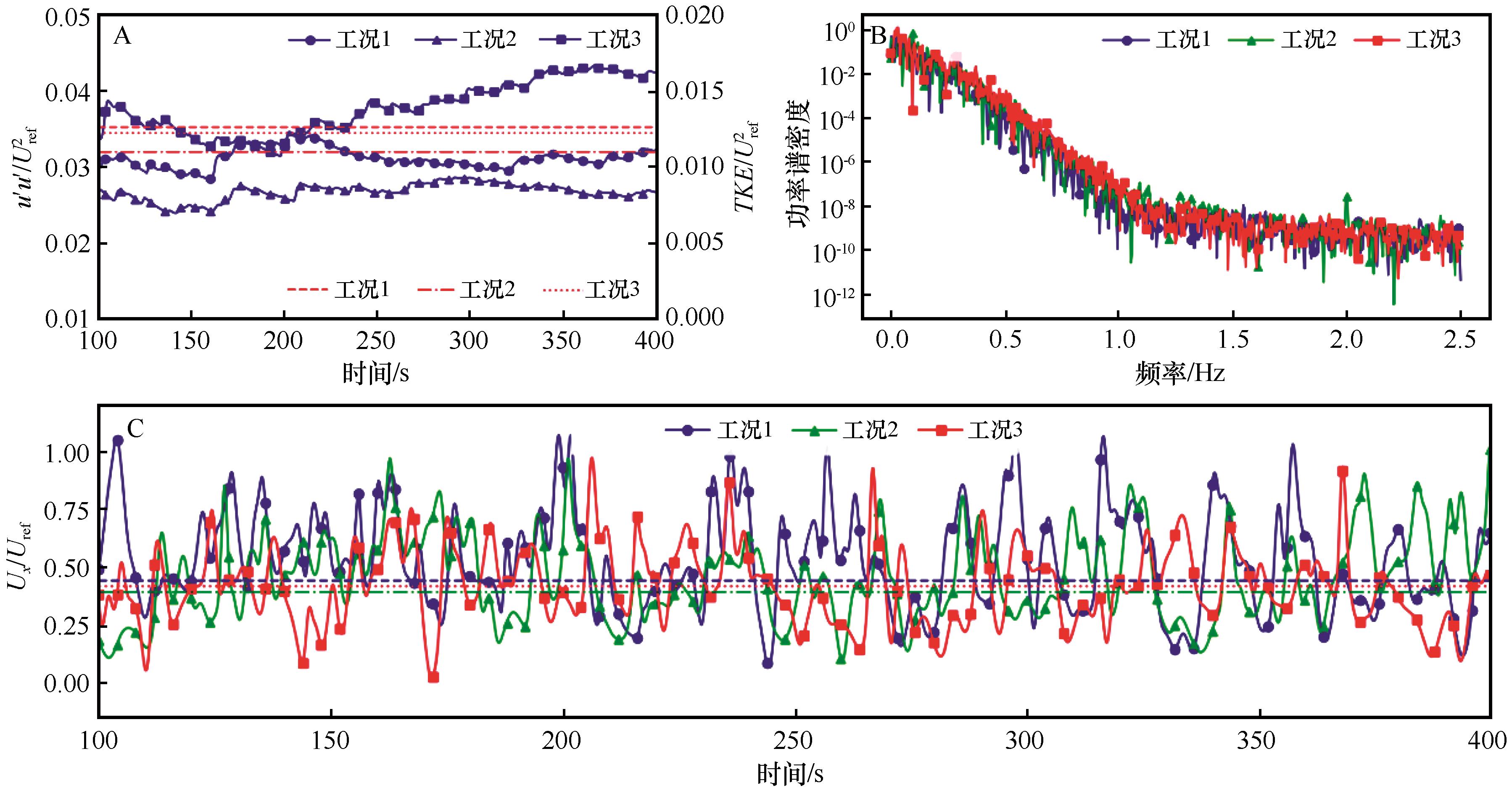
Fig.13 Fluctuating velocity, mean turbulent kinetic energy (A), velocity power spectral density (B), and instantaneous flow velocity (C) in far wake region
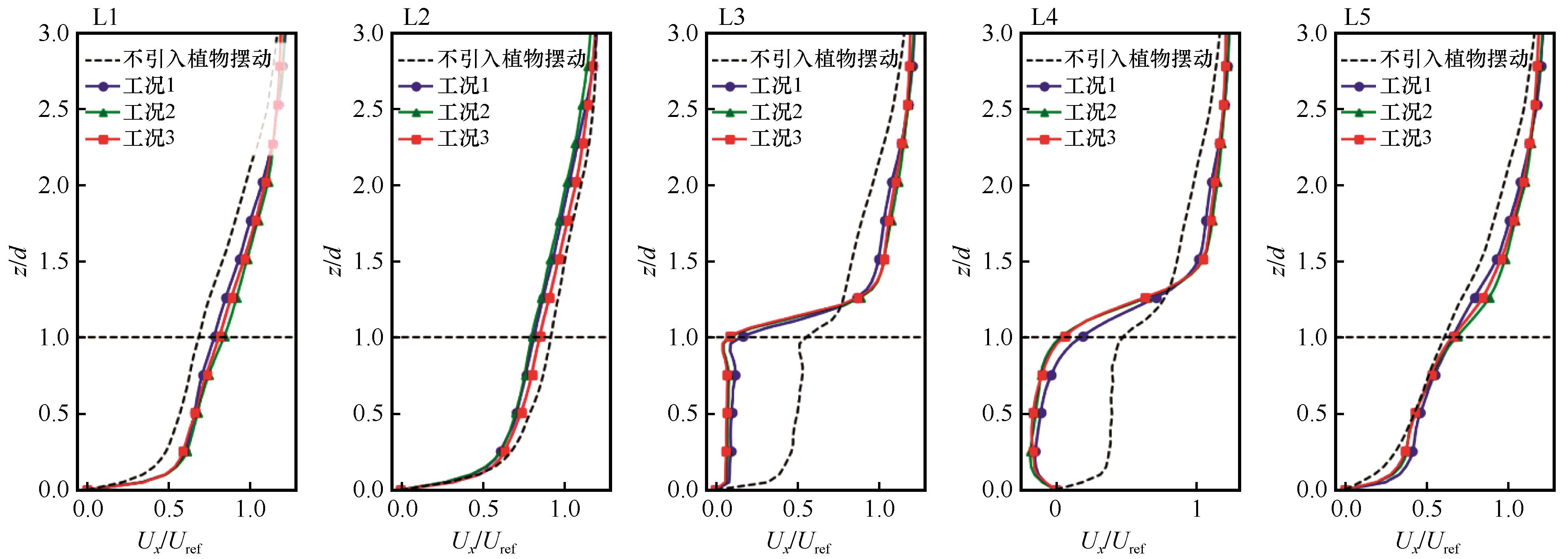
Fig.15 Wind profiles at different streamwise locations, and the differences in wind profile between rigid porous plant models and flexible plant models
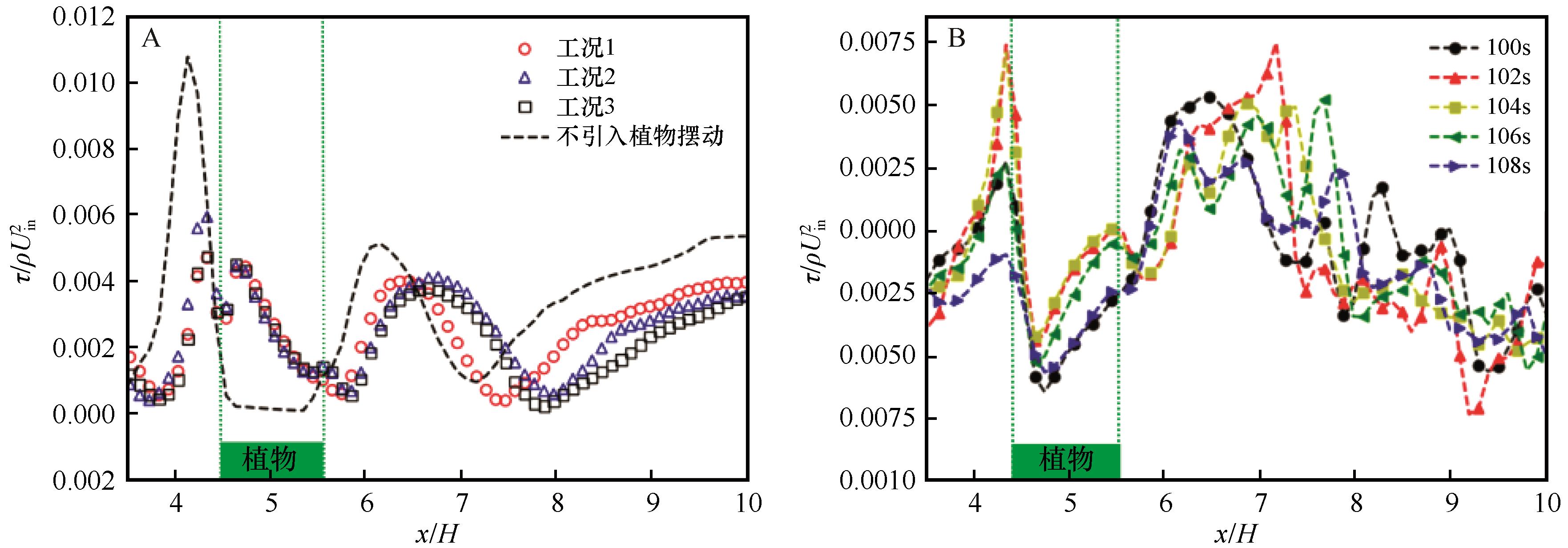
Fig.17 Variation of average wall shear stress along the flow direction (A), and variation curves of transient wall shear stress along the flow direction (B)
| 1 | Wolfe S A, Nickling W G.The protective role of sparse vegetation in wind erosion[J].Progress in Physical Geography:Earth and Environment,1993,17(1):50-68. |
| 2 | 屈志强,刘连友,吕艳丽,等.柔韧性概念在沙生植物中的应用[J].中国沙漠,2012,32(1):42-46. |
| 3 | 唐艳,刘连友,屈志强,等.植物阻沙能力研究进展[J].中国沙漠,2011,31(1):43-48. |
| 4 | 张萌,亢力强,王晓美.交错和矩形布置对树状植被地表剪应力和输沙率的影响[J].中国沙漠,2024,44(1):50-60. |
| 5 | 周峰,娄厦, Larisa R D,等.柔性植物影响下水沙运动及物质输运研究进展[J].水利水电科技进展,2023,43(3):107-116. |
| 6 | 金彩平,张景新.波浪流经柔性细杆群衰减规律的数值研究[C]//上海交通大学船舶海洋与建筑工程学院,上海交通大学水动力学教育部重点实验室.第三十三届全国水动力学研讨会论文集.2022:478-485. |
| 7 | 黄本胜,赖冠文,程禹平.海堤外滩地种树效果及对行洪影响[J].人民珠江,1995,88(3):38-42. |
| 8 | 吴福生.含植物明渠水动力特性研究[D].南京:南京水利科学研究院,2009. |
| 9 | Ghisalberti M, Nepf H M.Mixing layers and coherent structures in vegetated aquatic flows[J].Journal Of Geophysical Research:Oceans,2002,107(C2):000871. |
| 10 | Liu R, Zhang J, Yang X,et al.Simulating airflow around flexible vegetative windbreaks[J].Journal Of Geophysical Research:Atmospheres,2021,126(19):034578. |
| 11 | Wu X X, Fan P P.Airflow field and shelter effect around flexible plants using fluid-structure interaction (FSI)-large-eddy-simulation (LES) simulations[J].Journal of Geophysical Research:Biogeosciences,2023,128:007061. |
| 12 | He S, Liu H, Shen L.Simulation-based study of turbulent aquatic canopy flows with flexible stems[J].Journal of Fluid Mechanics,2022,947:A33. |
| 13 | 刘彦东,徐国宾,张雅卓.含柔性沉水植物河道水力特性三维数值模拟研究[J].水资源与水工程学报,2014,25:44-49. |
| 14 | Wilson J D, Finnigan J J, Raupach M R.A First-order closure for diturbed plant-canopy flows,and its application to winds in a canopy on a ridge[J].Quarterly Journal Of The Royal Meteorological Society,1998,124(547):705-732. |
| 15 | Dupont S, Brunet Y.Edge flow and canopy structure:a large-eddy simulation study[J].Boundary-Layer Meteorology,2007,126(1):51-71. |
| 16 | Smagorinsky J.General circulation experiments with the primitive equations:I.the basic experiment[J].Monthly Weather Review,1963,91(3):99-164. |
| 17 | Wood B D, He X, Apte S V.Modeling turbulent flows in porous media[J].Annual Review Of Fluid Mechanics,2020,52(1):171-203. |
| 18 | Chang K, Constantinescu G.Numerical investigation of flow and turbulence structure through and around a circular array of rigid cylinders[J].Journal Of Fluid Mechanics,2015,776:161-199. |
| 19 | 张小霞,林鹏智.波浪作用下柔性草本植物受力特性研究[J].力学学报,2021,53:1018-1027. |
| 20 | Nepf H M.Vegetated flow dynamics[M]//Fagherazzi S,Marani M,Blum L K.Coastal and Estuarine Studies.Washington,DC,USA:American Geophysical Union,2013:137-163. |
| 21 | 苏宇,袁立敏,党晓宏,等.风滚植物高立式沙障防风效应研究[J].内蒙古林业科技,2024,50(3):7-13. |
| 22 | 何志辉,李生宇,王海峰,等.塔克拉玛干沙漠4种结构尼龙阻沙网的防风阻沙效益对比[J].干旱区研究,2014,31(2):369-374. |
| 23 | Belcher S E, Jerram N, Hunt J C R.Adjustment of a turbulent boundary layer to a canopy of roughness elements[J].Journal of Fluid Mechanics,2003,488:369-398. |
| 24 | 亢力强,李彩云,张军杰,等.柔性植株地表瞬时地表剪应力分布特征[J].中国沙漠,2020,40(5):49-56. |
| [1] | Li Jingwen, Bao Yanfeng, Guo Hao, Liu Minghu, Xin Zhiming, Liu Pengfei. Wind tunnel test of wind speed reduction of Haloxylon anmodendron forests with different configuration [J]. Journal of Desert Research, 2020, 40(3): 77-84. |
| [2] | Bao Yanfeng, Wang Xuequan, Yao Bin, Hao Yuguang, Liu Fang, Xin Zhiming, Li Yonghua. Windbreak effect of superimposed narrow belt and small net shelterbelts base on wind velocity flow field [J]. Journal of Desert Research, 2020, 40(2): 185-194. |
| [3] | Hua Cong, Liu Chao, Zhang Bihui. Comparative Analysis of Transport Characteristics of Two Dust Events Affecting Beijing [J]. Journal of Desert Research, 2019, 39(6): 99-107. |
| [4] | Liu Chao, Hua Cong, Zhang Hengde, Zhang Bihui. Analysis of A Haze-Dust Air Pollution Process in Spring of Beijing Based on Wind Profiler Radar [J]. Journal of Desert Research, 2019, 39(5): 88-96. |
| [5] | Li Xuelin, Ma Yanjun, Ma Rui, Zhang Yinghua, Tang Weidong, Yang Jinjie. Wind Flow Field and Windproof Efficiency of Shelterbelt in Different Width [J]. Journal of Desert Research, 2018, 38(5): 936-944. |
| [6] | Guo Caiyun, Han Zhiwen, Li Aimin, Zhong Shuai. Dynamic Mechanism Research on the Secondary Blown Sand Disaster in the 110 MW Photovoltaic Arrays of the Hobq Desert [J]. Journal of Desert Research, 2018, 38(2): 225-232. |
| [7] | Liu Hujun, Yuan Hongbo, Guo Chunxiu, Xu Xianying, Wang Duoze, Li Xuemin, Liu Kailin. Windbreak Efficiency of Two Types of Simulated Shrub Forest Equally Planted in Field [J]. JOURNAL OF DESERT RESEARCH, 2015, 35(1): 8-13. |
| [8] | Wen Yating, He Hongrang, Wang Chunming, Wang Liqiong, Jiao Bing. Characteristics of Turbulence Energy Dissipation Rates and Structure Function Parameters in the Hinterland of the Taklimakan Desert [J]. JOURNAL OF DESERT RESEARCH, 2014, 34(4): 1094-1101. |
| [9] | ZHENG Ze-hao1,2,3, LEI Jia-qiang1,3, LI Sheng-yu1, WANG Hai-feng1, FAN Jing-long. Test and Evaluation of Wind Flow Characteristics of a Portable Wind Tunnel [J]. JOURNAL OF DESERT RESEARCH, 2012, 32(6): 1551-1558. |
| [10] | WANG Ke, HE Qing, WANG Min-zhong, HU Yue-hong, LI Xiao-hui. Wind Field at Boundary Layer in Hinterland of the Taklimakan Desert [J]. JOURNAL OF DESERT RESEARCH, 2012, 32(4): 1029-1034. |
| [11] | DU He-qiang, HAN Zhi-wen, WANG Tao, SUN Jia-huan. Variation of Wind Profile and Sand Flow Structure above Barchan Dune [J]. JOURNAL OF DESERT RESEARCH, 2012, 32(1): 9-16. |
| [12] | QU Zhi-qiang, LIU Lian-you, Yan-li , TANG Yan, JIA Zhen-jie. Application of Concept of Flexibility in Psammophyte Research [J]. JOURNAL OF DESERT RESEARCH, 2012, 32(1): 42-46. |
| [13] | WU Xiao-xu;ZOU Xue-yong;WANG Ren-de;ZHAO Jing-yan;CHENG Hong;QIAN Jiang. Aeolian Movement Characteristics over Different Underlying Surfaces in Mu Us Sandy Land [J]. JOURNAL OF DESERT RESEARCH, 2011, 31(4): 828-835. |
| [14] | WANG Min-zhong;WEI Wen-shou;HE Qing;WANG Ke;WANG Juan;. Preliminary Study on Sand-dust Weather Process Detection Using Boundary Wind Profile Radar [J]. JOURNAL OF DESERT RESEARCH, 2011, 31(2): 352-356. |
| [15] | MEI Fan-min;. A Concept Model of Dynamic Evolution of Aeolian Sand Particles Entrainment in Terms of Turbulence Structure [J]. JOURNAL OF DESERT RESEARCH, 2011, 31(2): 379-385. |
| Viewed | ||||||
|
Full text |
|
|||||
|
Abstract |
|
|||||
©2018Journal of Desert Research
Tel:0931-8267545
Email:caiedit@lzb.ac.cn;desert@lzb.ac.cn
Support:Magtech